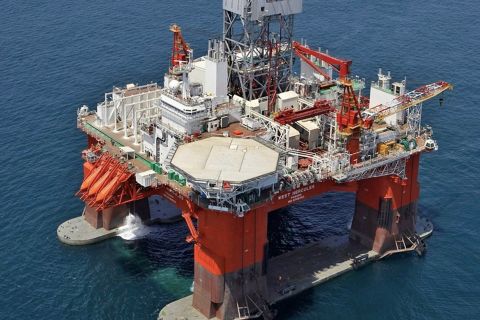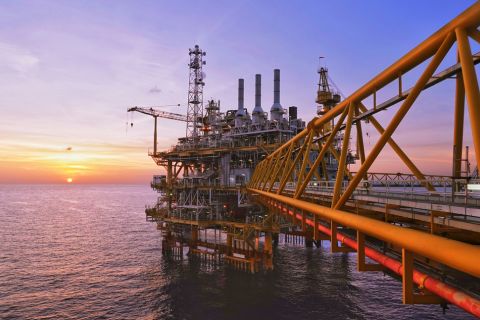A new EOR approach using chemical systems originally deployed in environmental remediation is under evaluation by the Enhanced Oil Recovery Institute (EORI) at the University of Wyoming. The new chemical system combines plant-based surfactants, cosolvents, and low concentrations of peroxide to facilitate extraction by changing the surface properties of oils and detaching them from the soil matrix. While the chemical platform has been field-proven in remediation and near-field stimulation, the most promising application may be in chemical flooding.
The patented combination of surfactants and peroxide, known as surfactant-enhanced product recovery (SEPR), was developed to address creosote and coal tar contamination found at former gas works, wood treaters, and manufacturing sites. Traditional chemical approaches to cleaning up these sites included use of peroxide systems or surfactants separately, but a combined approach could not be achieved due to issues with surfactant stability. The new, more stable plant-based surfactant formulations and optimization of dosage and engineering design have allowed these chemicals to be combined in SEPR.
SEPR explained
Surfactant/co-solvent blends and peroxide aid extraction through separate synergistic mechanisms. When peroxide enters the subsurface it reacts with minerals and organic matter to generate oxygen. The mechanical mixing caused by gas bubbles aids release of nonaqueous-based oils from the soil, and free radicals generated as the peroxide reacts with iron in the subsurface begin to break chemical bonds holding the organic matrix together, resulting in reduced viscosity. Surfactant/co-solvent blends can be formulated to emulsify contaminants by matching the hydrophobicity of the surfactant blend to the chemical makeup of the contamination on site. Once the oil is detached from a soil or rock matrix in the SEPR process, it is easier to extract. In addition to emulsification and interaction with the oil, surfactants lower interfacial tension, aiding transport from soil pores and transport.
SEPR uses a “huff and puff” method, where chemical is injected into the well using water to aid chemical distribution. The chemicals react with the oil surrounding the well, then the chemicals and oils are extracted through the same well. The radius of treatment increases over time as the chemicals introduce new pathways nd product is removed.
Adapting SEPR for EOR
Systems like VeruTEK’s ProBoost adapt SEPR technology to stimulate the near field and increase oil production by removing blockages and increasing relative permeability of the formation to oil. The same chemical mechanisms that remove heavy tar contamination also can facilitate transport of blockages in the oil industry. To transition from environmental to petroleum applications, the chemical blend was optimized to aggressively dissolve drilling mud, clay, paraffin, and asphaltene blockages and ensure compatibility with industry equipment and processing.
SEPR technology has been applied at numerous remediation sites, including US Superfund sites, and the ProBoost system has been used by more than 20 oil producers. The same chemical mechanisms that remove heavy tar contamination also can facilitate transport of blockages in the oil industry.
Next steps
In the coming months EORI will work to optimize the new process called PowerSolve GasGen chemical flooding system. A surfactant/co-solvent system compatible with the Minnelusa reservoir in Wyoming will be selected and evaluated at multiple low doses in coreflooding tests. Results of the coreflood tests will be presented to regional producers, and chemicals will be provided for a field-scale study that will use tracers to evaluate chemical transport and effects on sweep efficiency.

Physical and chemical mechanisms facilitate oil production from fractures during GasGen chemical flooding. (Image provided by VeruTEK Technologies)
PowerSolve GasGen uses multiple mechanisms simultaneously that are operative in established immiscible water-alternating gas (IWAG), gas displacement recovery (GDR), and chemical waterflood EOR methods. Unlike water or gas floods, GasGen prevents channeling, and unlike IWAG or GDR flooding systems, GasGen includes a surfactant component to lower interfacial tension. Simultaneous surfactant, water, and gas delivery enable lower volumes of gas to achieve the same effect, allowing gas to be delivered in chemical form without extensive infrastructure expense.
The injection of a liquid-only composition into the subsurface enables transport into preferential flow channels created either by prior water or gas floods or naturally occurring zones of greater intrinsic permeability. This mechanism is simply the liquid phase following zones of greater relative permeability to water, kthat increase zones of lower areal and vertical sweep efficiencies. Because the liquid phase of injected liquids results in the in situ production of a gas phase, once the liquid is present in zones of higher kthe volumetric gas content in the formation pore or fractures increases and greatly decreases the k, consequently decreasing preferential channeling associated with waterflooding alone. This increases the areal and vertical sweep efficiency of the GasGen chemical flood (GCF) process. The potential operative mechanisms of the GCF process include:
- Reduction of the interfacial tension (IFT) of the oil-water interface as a result of surfactant effects;
- Gas effects changing oil from the non-wetting to intermediate wetting phase, resulting in an increase in the contact angle increasing the capillary number;
- Gas becoming the non-wetting phase, occupying the larger pores and, in part, becoming the displacing fluid;
- Water remaining the wetting phase and occupying the smaller pores due to its high capillary pressure;
- Gas-oil IFT lower than water-oil IFT, resulting in an increase in the capillary number;
- Discontinuous oil slugs and oil films at the water-oil interface in a water-oil formation displaced by expanded gas phase, forming a larger continuous oil film and greatly lowering the oil residual saturation concentration in the pore or fracture, leading to greater recovery of the OOIP;
- Combined chemical and oxidation processes that decrease formation damage due to clay swelling, biofilms, aphaltenes, and paraffins, increasing the intrinsic permeability of the formation; and
- Generation of sufficient gas in situ to effect the displacement of oil from the pore or fracture space, changing the oil from the non-wetting to intermediate wetting phase without the need to generate very large volumes of gas required for pressure displacement as needed in IWAG or gas flooding operations.
The combination of surfactant/co-solvent mixtures and peroxide has led to advances in the environmental and petroleum industries, but the full potential of this chemical system has yet to be fully exploited.
Recommended Reading
Second Light Oil Discovery in Mopane-1X Well
2024-01-26 - Galp Energia's Avo-2 target in the Mopane-1X well offshore Namibia delivers second significant column of light oil.
CNOOC Sets Increased 2024-2026 Production Targets
2024-01-25 - CNOOC Ltd. plans on $17.5B capex in 2024, with 63% of that dedicated to project development.
Seadrill Awarded $97.5 Million in Drillship Contracts
2024-01-30 - Seadrill will also resume management services for its West Auriga drillship earlier than anticipated.
Oceaneering Won $200MM in Manufactured Products Contracts in Q4 2023
2024-02-05 - The revenues from Oceaneering International’s manufactured products contracts range in value from less than $10 million to greater than $100 million.
CNOOC’s Suizhong 36-1/Luda 5-2 Starts Production Offshore China
2024-02-05 - CNOOC plans 118 development wells in the shallow water project in the Bohai Sea — the largest secondary development and adjustment project offshore China.





